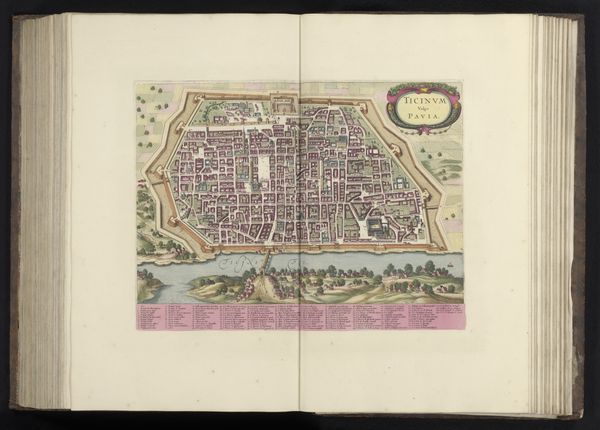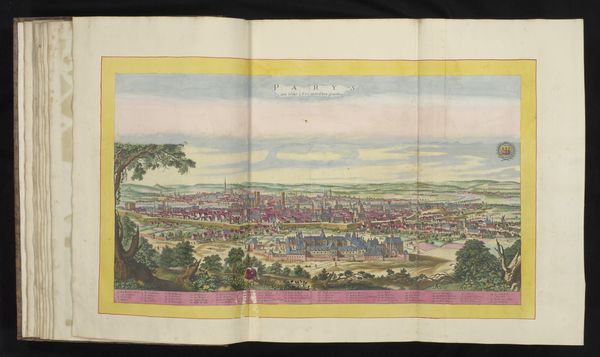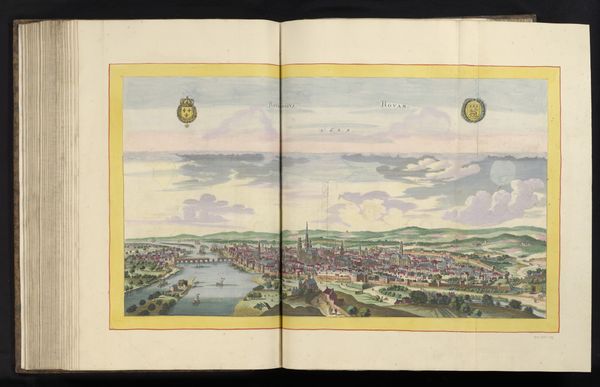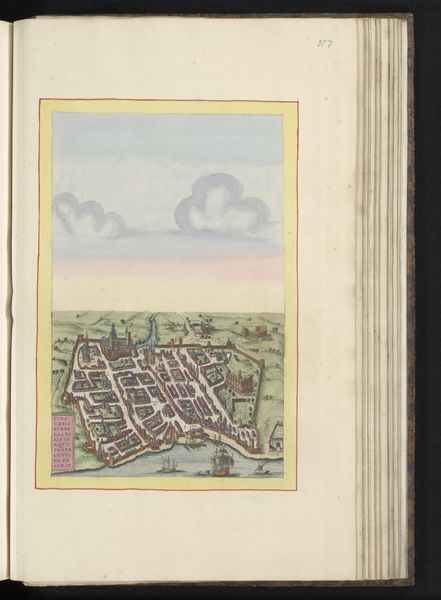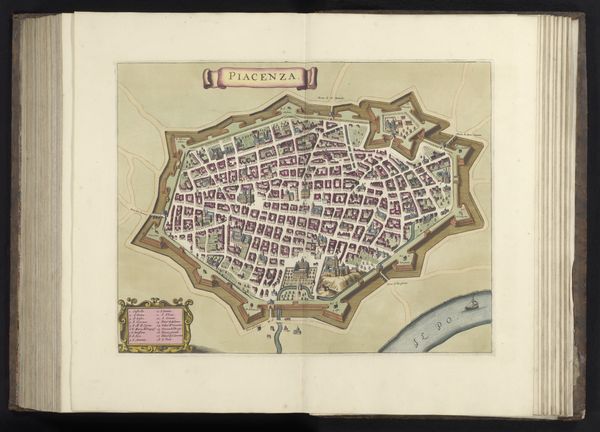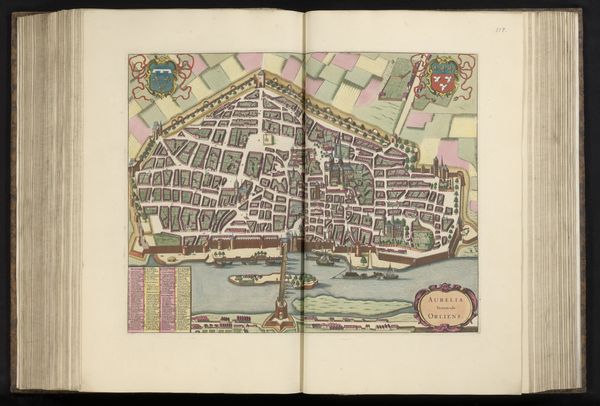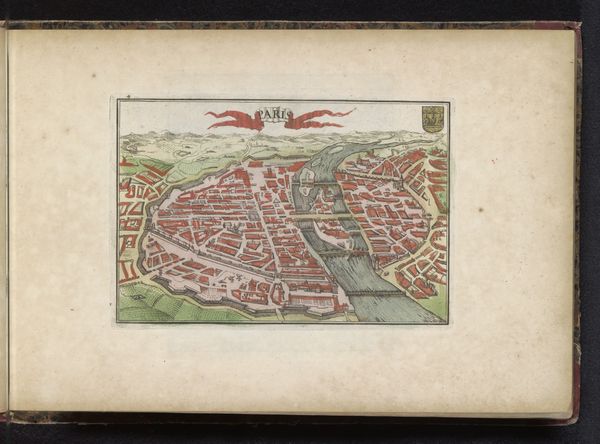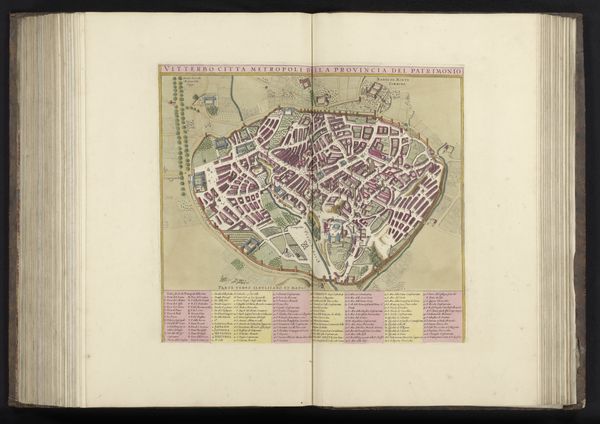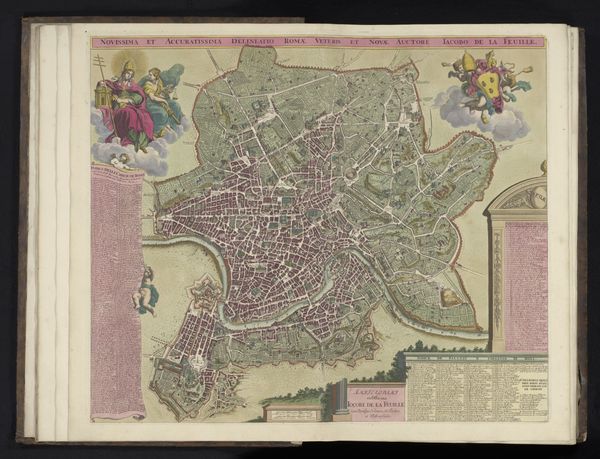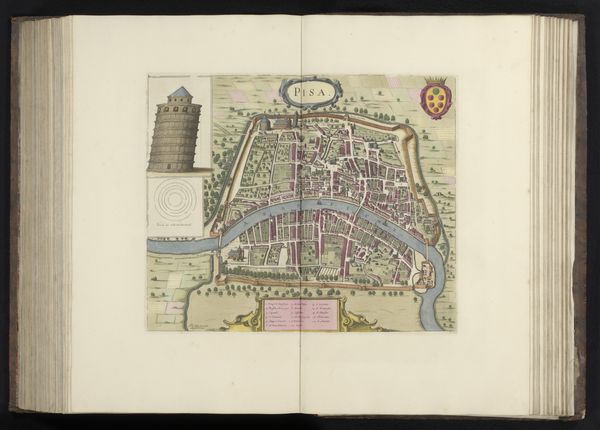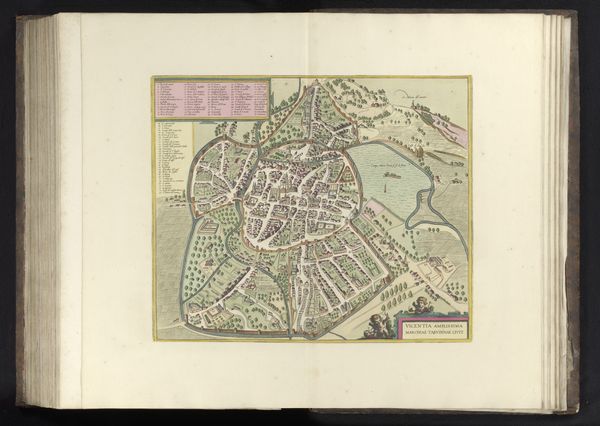
print, engraving
#
baroque
# print
#
coloured pencil
#
cityscape
#
engraving
Dimensions: height 346 mm, width 460 mm, height 535 mm, width 620 mm
Copyright: Rijks Museum: Open Domain
Curator: Welcome! Here we have a marvelous bird’s-eye view of Paris from 1655, entitled "Gezicht op Parijs in vogelvluchtperspectief, 1620". It was rendered by Matthäus Merian, through engraving and etching. Editor: It's striking how clearly defined the city is within its walls. A beautiful cage, isn't it? What really stands out is the density; look at the river threading its way between it all, industry and society all jammed together. Curator: Indeed! These cityscapes gained popularity because of the growing urban centers in Europe and this particular example showcases Paris as a political and cultural center. The meticulous rendering reflects not just the physical layout but also the era's ambitions for urban planning and control. Editor: Ambitions built on labor! Each building, each street signifies the toil of artisans and builders. It's fascinating how this printed image, multiplied and distributed, is itself a product of intensive labour in Merian’s workshop. And consider the materiality of the printing process itself, the ink, the paper, the press—each element carrying its own social and economic history. Curator: Precisely. The print also highlights how powerful imagery was becoming a means of constructing identity—in this case, a carefully designed projection of Parisian grandeur circulated throughout Europe. Think of it as early municipal PR. Editor: PR spun from sweat, stone, and the guts of animals. Look closer and you see those details are there too - those little boats probably show materials coming to build these great structures. The engraver had to render the scene to get the look, yet without these people and things nothing else could be achieved. Curator: Absolutely. It makes you consider what the consumption of the print signified too - how a growing bourgeoisie audience would relate to depictions of urbanity in ways that expressed, confirmed or denied their position. Editor: True. And now we can visit this very place ourselves! It's grounding, seeing where things started and also being present at where things are today - perhaps we're constructing something new just by talking about it? Curator: It certainly enriches our understanding.
Comments
No comments
Be the first to comment and join the conversation on the ultimate creative platform.
